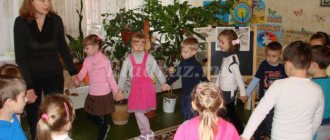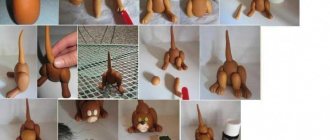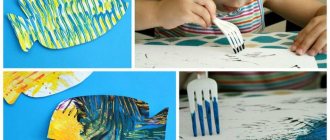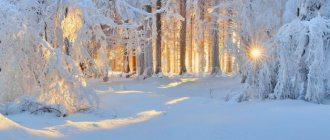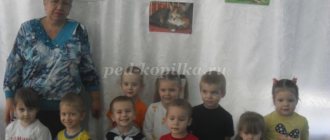How does a hare prepare for winter?
Hares do not hibernate, but a number of behavioral and physiological adaptations help them survive the winter. They have thick fur and a low surface area to volume ratio, which retains body heat. Hares sometimes dig shelters in the snow and huddle together to keep each other warm.
The main preparation of hares for winter is their ability to change their coat twice a year for better camouflage. In the fall, their thin brown fur gradually turns into a thicker white fur, giving them the ability to camouflage themselves against both summer and winter backgrounds. In spring, the fur turns brown again in response to increasing daylight hours.
To protect themselves when they sense danger, young hares usually remain motionless to blend into the surrounding background, but the usual strategy of adults is to run away and confuse the predator by rushing in different directions. Adult hares can cover a distance of up to three meters in one jump and reach speeds of up to 45 kilometers per hour.
How does a hedgehog prepare for winter?
For some of our wild animals, being well prepared for winter is a matter of survival.
Because hedgehogs are nocturnal, we sometimes don't notice them scurrying around our garden, helping us fight off slugs, snails and even insects that damage the plants we carefully cultivate.
As winter approaches, hedgehogs begin to prepare for hibernation. Hibernating animals slow their heartbeat and breathing rate, lower their body temperature and lower their metabolism to conserve energy, so having a good supply of fat and a stable sheltering environment is vital.
Hedgehogs typically hibernate from October to March and need to rely on their fat reserves to survive until spring. However, there could be many reasons why your hedgehog may not have gained enough weight. For example, bad weather can be a reason. Or young age, i.e. the animal did not live long enough to gain sufficient weight.
So, as hibernation season approaches, it can't hurt to give your hedgehogs a helping hand when it comes to finding food. You can leave food in the garden; meat food for cats and dogs (without fishy taste), seeds, nuts, and cottage cheese are suitable. You can also find special food for hedgehogs in stores. However, under no circumstances should you feed your hedgehog bread or milk, as they do not digest such food well.
If you are lucky enough to have a hedgehog in your garden, one important thing you can do is make him his own little house! The sooner you place such a house in your garden, the more likely it is that you will have a new neighbor. Place the house in a quiet place and cover it with dry branches, leaves and sticks. If you suspect a hedgehog is sleeping in your garden, be careful not to disturb it.
Who isn't afraid of frost?
Foxes, hares and wolves practically do not prepare for frosts, as they spend the winter on their feet in search of food. The bunnies just change their clothes: they change their gray fur coat to a white one so that predators do not notice them on the snow carpet. It is very interesting to watch how animals prepare for winter, because everyone has their own secret.
Foxes and wolves
Foxes and wolves do not change the color of their coats, but their fur becomes thicker and fluffier: this makes it easier to survive severe frosts. Wolves gather in packs because it is much more convenient to survive in winter. Sly foxes look for any holes to rest and hide from the snowstorm.
Beavers and squirrels
Squirrels and beavers do not hibernate, but they are trained responsibly. Beavers live in large families, all together they build cozy houses near ponds, next to which they put their food - twigs from trees. They also feed on the roots of plants that grow in water.
I wonder how a squirrel prepares for winter? Red-haired forest dwellers do not hibernate, although they spend most of their time in their homes - hollows that they build high in the trees.
This rodent changes the color of its coat from red to grayish to camouflage itself from predators. What does a squirrel eat in winter? During the cold season, this rodent stocks up with the following belongings:
- acorns,
- mushrooms,
- nuts,
- seeds.
Let's talk about the bear
Bears set up their home in advance. They look for caves, ditches, where they carry leaves, branches, moss, and make a soft mattress on top from spruce branches. When snow falls, it masks the bear's hiding place and keeps it warm.
Bears do not store food, but in the fall they actively feed on nuts and fish in order to accumulate as much fat as possible for the winter. In fact, the predator does not sleep, but dozes, and if necessary, it can leave the den. It is in winter that a mother bear gives birth to small cubs.
This is how animals spend the winter. Some sleep all winter, others try to stay warm and find food for themselves. And here you can learn a lot more interesting things about animals, birds and insects.
Read also:
- Birds wintering in Ukraine.
- Preparing insects for winter.
LiveInternetLiveInternet
Quote from Tatyana57
Read in full In your quotation book or community!
Late fall. Wild animals are preparing for winter.
Children should know: - the names of wild animals in our forests: bear, wolf, elk, wild boar, badger, beaver, fox, hare, squirrel, hedgehog, lynx; - that wild animals get their own food, build their own homes; - what is the name of the home of a bear (den), wolf (den), fox (hole), squirrel (hollow); - which other animals live in minks (hares, moles, mice, gophers, hamsters); - which of the animals changes the color of their fur coat (hare, squirrel), horns (elk, deer); - distinguish between the names of body parts of animals and humans. Expanding children's vocabulary: Nouns: bear, wolf, fox, hare, hedgehog, elk, deer, wild boar, badger, lynx, squirrel, den, den, hole, hollow, wool, skin, predators; Adjectives: shaggy, shaggy, fluffy, strong, cunning, prickly, fast, dexterous, brown, toothy, clumsy, club-footed, timid, long-eared; Verbs: hunts, sneaks, howls, gets scared, jumps, waddles, cunning, tracks, stores, digs, hibernates, lies down, hibernates. Conversation “How wild animals prepare for winter.” Winter will come soon. The animals of the forest have the hardest time. They are preparing to face winter. Some animals will sleep peacefully in their houses all winter. Who is this? Bear and hedgehog. Three months is a very long time, so now these animals must eat well and accumulate a lot of fat so as not to freeze and not get hungry until spring. They insulate their houses.
- Where will the hedgehog hide? In the hole.
—Where will the bear sleep? In the den. But there are animals that do not have a house and will run through the forest all winter, looking for food.
The hare changes his summer coat to a winter one. It is not only warmer, but also a different color. - Which one? - Why white? - From whom do his long legs and white fur save the hare? From the fox and the wolf.
These are beasts of prey. If they catch a hare, it won't be good for him. The fox has a home - a hole, where she can hide from the winter cold, and the wolf has a wolf's lair. - Do foxes and wolves need to change their fur coats to new winter ones? Of course it is necessary. After all, in the summer you and I wear light clothes so that it is not hot, and in the winter we put on warmer ones, so the animals also have to change clothes. This does not mean that they take off their skins and put on new ones, they just grow different, warmer fur. This period in the life of animals is called molting.
Another small furry forest dweller who changes the color of his coat for winter. The squirrel was red all summer, but by winter it turns gray.
-Where does the squirrel live? In the hollow. -How did she prepare for winter? All summer and autumn she collected mushrooms and berries and hid them in various places. In winter, she looks for her reserves, but, unfortunately, does not always find them. But in the place where the cones or nuts were hidden, a small sprout may appear in the spring and in a few years a new tree or bush will grow here.
- But this handsome forest man wears a beautiful decoration on his head. - Who is this? Elk. —What does a moose eat? Plants. -Are there many plants in the forest in winter? There are many trees and bushes in the forest. This big beast eats their bark. Does he need much for food? A lot of. Therefore, forest rangers feed these beautiful animals so that they can survive the winter. A forester is a person who monitors the safety of the forest. Didactic exercise “One-many” (formation of plural nouns): Fox - fox. Hedgehog - hedgehog. Squirrel is protein. Hare - hares. Wolf - wolves. Elk - moose. Boar - boars. Didactic exercise “Call it affectionately” (formation of nouns with diminutive suffixes in singular and plural): Squirrel - squirrel. Fox is a fox. Hare - bunny, bunny. Squirrel is a baby squirrel. Bear is a bear cub. Wolf - wolf cub. Didactic exercise “Count to five” (coordination of nouns with numerals): One hare, two hares, three hares, four hares, five hares. One fox, ..., five foxes. One wolf, ..., five wolves. One bear, ..., five bears. One squirrel, ..., five squirrels. Didactic game “Whose? Whose? Whose? Whose?" Fox tail - fox tail. A bear's paw is a bear's paw. Wolf teeth - wolf teeth. Hedgehog needles - hedgehog needles. Whose footprint? - fox, wolf, bear, hare, squirrel. Whose ears? - fox, wolf, bear, hare, squirrel. Whose head? - fox, wolf, bear, hare, squirrel. Didactic exercise “Choose definitions”: Wolf (which one?) - gray, toothy, scary, ... Bear (which one?) - brown, club-footed, clumsy, ... Fox (which one?) - cunning, fluffy, red, ... Hedgehog (which one? ) – prickly, small, ... Hare (which one?) – long-eared, timid, cowardly, small, Didactic game “Who lives where?” (use of the nominative case of nouns): In the den lives (who?) - a bear. Living in the hole (who?) is a fox. There lives (who?) a wolf in the lair. Living in a hole (who?) is a hedgehog. In the hollow lives (who?) a squirrel. Didactic exercise “Compare animals with people.” Man has a mouth, and animals have a mouth. A person has a face, and animals have a muzzle. Humans have teeth, and animals have fangs. A person has a belly, and animals have a belly. Humans have nails, and animals have claws. Humans have hands, and animals have paws. Didactic game “Name the family” (word formation exercise):
Dad is a bear, mom is a bear, cub(s) is a bear cub(s).
The father is a wolf, the mother is a she-wolf, the cub(s) are a wolf cub(s).
The father is a fox, the mother is a fox, the cub(s) are a fox cub. Dad is a hare, mother is a hare, baby(s) is a hare(s). Didactic game “Who gives what voice?” (match the verb to the noun): The fox barks. The bear growls. The wolf howls. Hedgehog - snorts, etc. Didactic exercise “What is unnecessary and why?” Squirrel, fox, cow, wolf (cow, since the rest are wild animals). Hedgehog, bear, hare, dog (dog, since the rest are wild animals). Hare, dog, cow, cat (hare, since the rest are domestic animals). Fox, cat, hare, wolf (cat, since the rest are wild animals). Horse, bear, goat, dog (bear, since the rest are domestic animals). Game “Who will we give what?” Meat for the wolf. Raspberries - ... Honey - ... Carrots - ... Apples - ... Nuts - ... Mushrooms - ... etc. Game “Who has who?” The bear has cubs. For a fox - ... For a wolf - ... For a hare - ... For a hedgehog - ... For a squirrel - ... etc.
MAGAZINE Preschooler.RF
Lesson on the environment on the topic “How animals prepare for winter”Goals:
- Expand children's understanding of the diversity of natural phenomena.
- Help establish simple connections between them. Reinforce ideas about seasonal changes in nature.
- Expand ideas about life in natural conditions of animals, what they eat, how they adapt to life in winter conditions.
- Foster a love for nature and respect for it. To instill in children a positive attitude towards work and a desire to work.
- Develop fine motor skills of the fingers; encourage creativity and independence.
- Develop children's speech.
Visual material: bird, letter, silhouettes of animals (squirrel, hare, bear), model of a forest.
Handouts: glue, brushes, cardboard silhouettes of animals, cereals (semolina, buckwheat, millet), winter clothes (hats, scarves, mittens)
- Organizing time
- Progress of the lesson.
- Hello guys, hello our dear guests. Today we will show our guests how we can practice (a knock is heard).
Educator: Guys, who is this knocking on our door, asking to join our group? (I bring in the bird with the letter). Yes, this is an owl that flew to us. She brought us a letter
Who did the letter come from? You want to know, right? Then you have to try to guess all the riddles.
Puzzles.
- The animal is shaggy, clubfooted, He sucks his paw in the den. (bear)
- Who deftly jumps through the trees? And flies up into the oak trees, Who hides nuts in a hollow, Dries mushrooms for the winter. (squirrel)
- Who walks through the forest angry and hungry in the cold winter? (wolf)
- Cross-eyed, small, wearing a white fur coat and felt boots. (hare)
Educator: Well done guys! All the riddles were solved.
Educator: A letter from our friends - forest animals. They write that they lived well in the forest clearing. They lived without grieving, they were friends with each other, squirrels and hares, bear cubs and wolf cubs. They played together happily, but forgot about winter. It became cold outside: it was snowing, cold rain was pouring, the wind was howling, and the branches of the trees were being torn off. The animals forgot to sew warm fur coats and ask you for help.
- You are good guys, will you help the animals?
Let's go with you to the forest and try to help our friends, but let's take moms and dads with us (2-3 parents are called) But for this you need to dress your parents warmer so that they don't freeze (children dress their parents for a while)
Well done! Now you can go!
Fizminutka
We walked, walked, walked, found snowdrifts on the left, stood up, stood there, and walked again.
We walked, walked, walked, found a bump on the right, bent down, picked it up, and walked again.
“Now close your eyes and repeat after me:
1, 2, 3 turn around yourself and find yourself in a fairytale forest.
- Guys, how should you behave in the forest?
Children: Don’t make noise, don’t throw garbage, don’t break trees.
Educator: That's right, guys! Don't make noise, don't shout, but help each other.
Educator: But in front of you is a fairy-tale forest. Look carefully, what animals do you see?
Children: hare, bear, squirrel.
Educator: Where can we get warm fur coats?
Children: Buy at the store, sew.
Educator: But there is no store in the forest. And there is a forestry studio. I suggest you become tailors and insulate fur coats for animals from various grains, and your parents will help you! What grains do you see? (Buckwheat, rice, millet). (There are silhouettes of animals on the table). (Children spread PVA glue on the cardboard silhouettes of animals and sprinkle with cereal of the corresponding color).
- What will you use to make a fur coat for a bear? (from buckwheat)
— What color is the bunny’s fur coat? (white)
-What will you make it from? (from semolina)
— What color is the squirrel’s fur coat?
We have prepared our fur coats. But now the animals offer to play with them, collect cubes, and the parents will help us (the first group of children collects a squirrel, the second a bear, the third a bunny)
- What great guys you are! What wonderful fur coats we made and played with the animals.
While the animals are trying on fur coats, you and I will play the game . ”
- The hare is white in winter, and in summer ...... (gray)
- The hare has a short tail, and ears...... (long)
The hedgehog is small, and the bear...... (big)
- The hare is fluffy, and the hedgehog...... (prickly)
- The squirrel has a long tail, and the hare has ...... (short)
- Now put the figures in the forest clearing (model of the forest).
— Tell poems about your forest friends. (Children recite poems about animals for whom fur coats were made).
You tried very hard and the wild animals are grateful to you for your help! It was a pleasure to communicate with you. Thank you and our guests!
| Next > |

